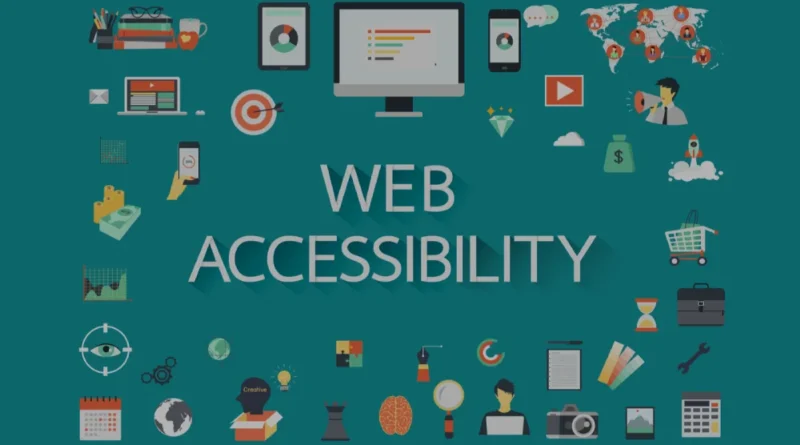How to Build an Accessible Website That Wins Customers
Web accessibility now serves as a critical ranking parameter for 2025, and thus organizations must make their sites usable by all users who have different abilities to succeed. Accessible website design means more than basic compliance under ADA regulations because it produces superior visitor experiences, and at the same time it expands your audience reach and establishes enduring trust relationships with site users.
Why Accessibility Matters in 2025
Relevant search engines now place accessibility features at the forefront of their search engine rankings. AI browsing tools, including users’ voice assistants and screen readers, have become prevalent, so users assume websites will adapt automatically to their requirements. A website that follows ADA standards has become a standard for operational excellence and access for all users, leading non-compliant organizations to encounter potential penalties and abandoned income streams.
Your brand becomes more accessible to all customers and more desirable when you provide websites that are easy for people with disabilities and the 1 in 4 adults in the U.S. with disabilities (CDC).
Core Elements of Accessible Website Design
Let’s break down the essential components of accessible website design that align with 2025 standards:
1. Keyboard Navigation
Every section of your website needs to work properly when users access it through the keyboard alone. The usage of the keyboard as the sole navigation method is vital since it benefits those with motor impairment issues and users who employ assistive technologies. Users should navigate through content easily because your interface uses priority tab sequences along with indicators that show active elements.
2. Alt Text for Images
Alternative text serves as the main form of image description for visually impaired users who are navigating with screen readers. Every image requires alternative text containing a meaningful description of its essential function. The use of text-based images should only occur when essential to communication, but descriptive textures must accompany them in all cases.
3. Contrast and Color Choices
High-contrast color schemes should be used because they improve text legibility. Important visual components should avoid color pairings that include bluish purple with greenish-red tones. Activated color schemes allow users with either visual impairments or color blindness to view your content.
4. Text Resizing and Readability
The text should maintain its original design when users resize it to 200% without causing any disruption to the graphical presentation. Make text easy to read by using large-sized, easy-to-read fonts together with sufficient space between text lines, and prevent using complicated language and terminology. The content should appear in smaller units through structured paragraphs followed by subheading divisions for simpler understanding.
5. Semantic HTML and ARIA Roles
Semantic HTML tags, including header, nav, main, and footer, with others among them, make page structure easier to understand for both humans and assistive technologies. The ARIA (Accessible Rich Internet Applications) roles help assistive technologies navigate websites by supplying additional context information, which enables better understanding of sliders and modals or buttons.
6. Responsive and Voice-Compatible Design
People will routinely use AI assistants for voice navigation by 2025. Your website should integrate voice command functionality while using correct labels for all interactive elements to make tool interpretations such as Google Assistant or Siri successful.
How Accessibility Builds Trust - and Converts
An accessible website benefits all visitor types, including those who have disabilities. Users who receive easy-to-use navigation experiences together with effortless readability on your website will naturally remain longer, which increases your conversion rates. Your brand will gain credibility along with an image of forward social responsibility by demonstrating your accessibility initiatives.
Businesses that provide services along with eCommerce brands and local stores use accessible web design to gain market advantage during periods when competitors remain behind.
Final Thoughts
Web accessibility demands continuous work because it requires businesses to dedicate themselves to inclusivity while also developing superior designs. You can begin by performing an audit of site contrast, then adding alternative text descriptions, followed by keyboard testing. Your efforts to incorporate accessibility must become an integral component of all development and design phases during your growth period.
The implementation of accessible website design combined with ADA compliance leads to a digital platform that embraces all users and creates loyal customer relationships.
Disclaimer
The information presented in this blog is derived from publicly available sources for general use, including any cited references. While we strive to mention credible sources whenever possible, Top Web Design Agency in Mumbai does not guarantee the accuracy of the information provided in any way. This article is intended solely for general informational purposes. It should be understood that it does not constitute legal advice and does not aim to serve as such. If any individual(s) make decisions based on the information in this article without verifying the facts, we explicitly reject any liability that may arise as a result. We recommend that readers seek separate guidance regarding any specific information provided here.

